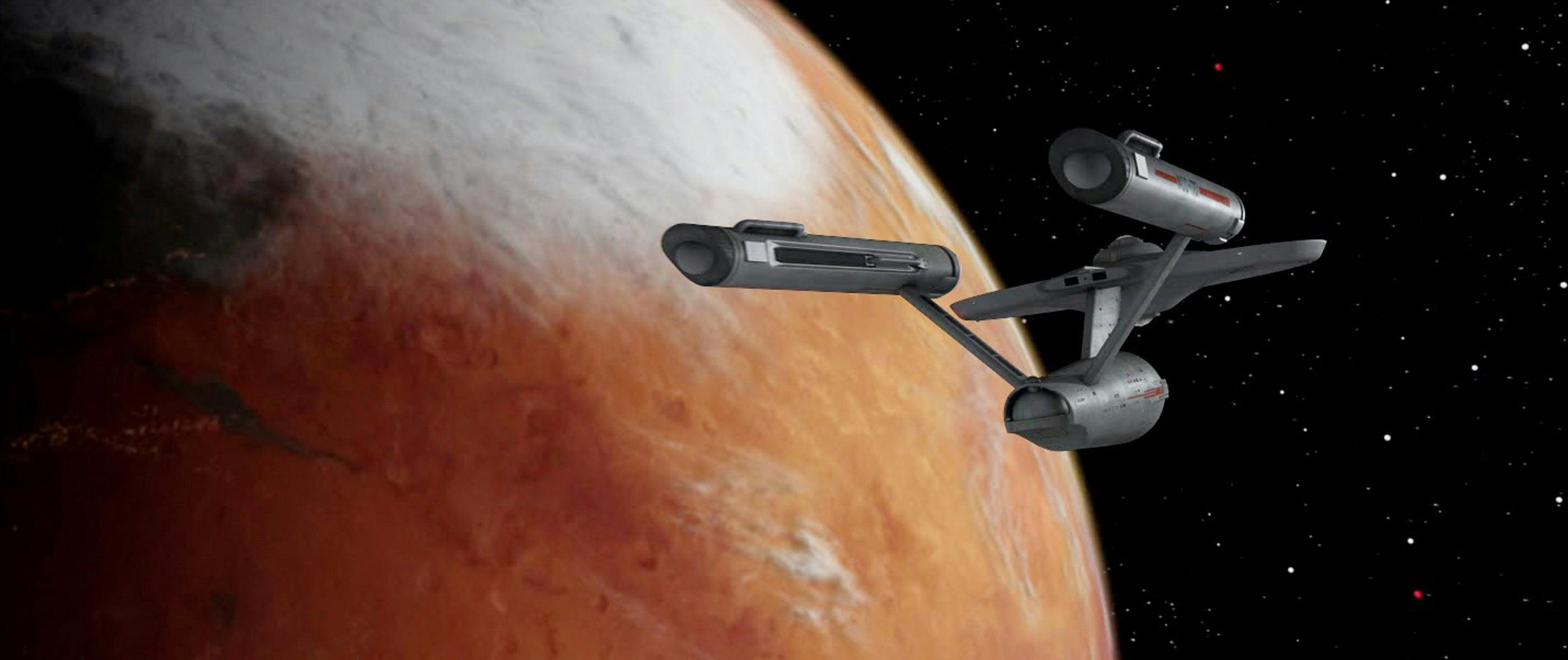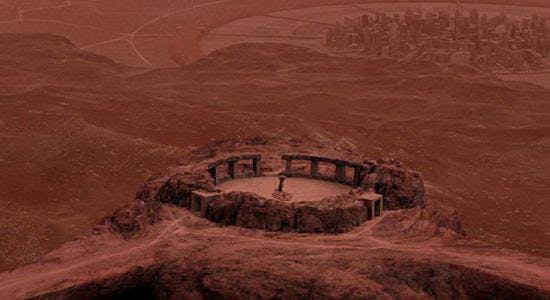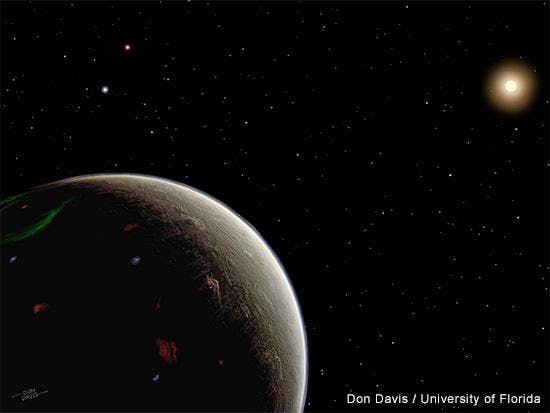Published Sep 19, 2018
Vulcan-like Planet Found... for Real
Vulcan-like Planet Found... for Real

"This is the best and coolest piece of news I’ve read in a while," Anson Mount -- Star Trek: Discovery's Captain Pike -- posted the other day on his Facebook page. "Planet Vulcan is real, people!"

Here's the scoop. Star Trek creator Gene Roddenberry, along with Sallie Baliunas, Robert Donahue and George Nassiopoulos, a trio of astronomers with the Harvard-Smithsonian Center for Astrophysics, chose to link Vulcan with an actual exoplanet, which orbits a star named 40 Eridani A. That occurred back in July, 1991, in a letter published in Sky & Telescope, just a few months before Roddenberry's death. References were made to 40 Eridani A in several Trek-related books, as well as on Star Trek: The Next Generation. It became canonical on Star Trek: Enterprise, while "Eridani D" was mentioned in the first-season Star Trek: Discovery episode, "Lethe."
Fast forward to the present. The Dharma Planet Survey, via a new study spearheaded by University of Florida astronomer Jian Ge and a team that features Tennessee State University astronomers Matthew Muterspaugh and Gregory Henry, has located what could be Trek’s iconic planet Vulcan.

“The new planet is a ‘super-Earth’ orbiting the star HD 26965, which is only 16 light years from Earth, making it the closest super-Earth orbiting another Sun-like star,” Ge said in a statement. "The planet is roughly twice the size of Earth and orbits its star with a 42-day period just inside the star’s optimal habitable zone.” According to an article on the Science & Wellness page on the University of Florida site, the discovery was made using the Dharma Endowment Foundation Telescope (DEFT), a 50-inch telescope located atop Mt. Lemmon in southern Arizona. The planet is the first “super-Earth” detected by the Dharma Survey.
“The orange-tinted HD 26965 is only slightly cooler and slightly less massive than our Sun, is approximately the same age as our Sun, and has a 10.1-year magnetic cycle nearly identical to the Sun’s 11.6-year sunspot cycle,” noted Muterspaugh, who helped to commission the Dharma spectrograph on the TSU 2-meter automatic spectroscopic telescope. “Therefore, HD 26965 may be an ideal host star for an advanced civilization.”

And, Henry added, Trek fans might recognize the star HD 26965 by its other moniker... 40 Eridani A. Henry, whom the UF article reports collected precise brightness measurements of the star at TSU’s automated observatory needed to confirm the presence of the planet, stated, “Vulcan was connected to 40 Eridani A in the publications Star Trek 2 by James Blish (Bantam, 1968) and Star Trek Maps by Jeff Maynard (Bantam, 1980)." The aforementioned letter from Roddenberry, Baliunas and Nassiopoulos confirmed the identification of 40 Eridani A as Vulcan’s host star. Per the UF story, the 40 Eridani star system is composed of three stars. Vulcan orbits the primary star, and the two companion stars would, quoting the letter, "gleam brilliantly in the Vulcan sky."
“This star can be seen with the naked eye, unlike the host stars of most of the known planets discovered to date," noted Bo Ma, a UF postdoc on the team and the first author of the paper published in Monthly Notices of the Royal Astronomical Society. "Now anyone can see 40 Eridani on a clear night and be proud to point out Spock’s home."
Sounds perfectly logical to us.

